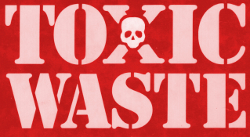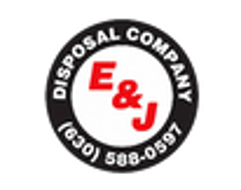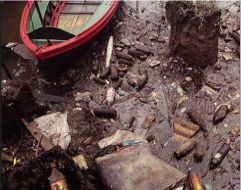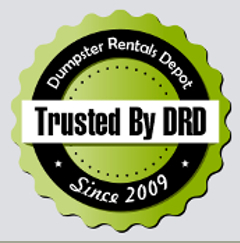Toxic Waste: The Pizza Is Coming...

This post was prepared and published with the help of environmentally concerned members of Dumpster Rentals Depot: Dumpster Rentals in Seattle , Dumpster Rentals in Edmonton , Dumpster Rentals in Phoenix and Roll Off Bins Calgary, AB.
Take about 800 tons of flour.
Mix with water to make up 400,000 gallons. Stir, if you have the strength. Add generous helpings of cheese, tomato paste, mushrooms, and pepperoni.
Don't forget the onions!
What have you got?
You might have the makings of a pizza big enough to feed an army. Then again, you might not.
What the small town of Wellston, OH, had was a horrendous mess of slippery, smelly gunk-and a clogged sewage system. It was not a good start to the year 1983.
About a year earlier, a company named leno's, Inc., bad opened a frozen pizza plant in Wellston. The plant provided 1,000 new job openings, a healthy boost for a town of 6,100 people. In return for the jobs, town officials promised that the Wellston sewage system would handle the liquid waste water from the plant.
Water is one thing. But the town officials had not planned for the huge amounts of dough, grease, and other garbage that came with the water. Over the months,
pizza wastes slowly filled the sewage system's two settling tanks.
Normally, solids in sewage water settle to the bottoms of these tanks. They form a half-solid, half-liquid mass called sludge. Bacteria break down harmful substances in the sludge. Often, gas produced in this process is used as fuel to help run the sewage plant. The processed sludge can be dried and used as fertilizer. Or it may be incinerated.
But the problem with the pizza plant was that it produced too much sludge too fast. By the start of 1983, the sludge was overflowing the settling tanks. It was filling the sewage system's holding lagoon-a small pond for temporary waste storage.
The Ohio Environmental Protection Agency feared the sludge would overflow to a nearby creek and foul drinking water supplies. The agency threatened to close the plant.
Town officials were desperate. What could they do?
Could they just bury the sludge in a landfill? No, said the town's safety-service director, Richard E. Devlin. The greasy, doughy, semiliquid sludge was so slippery it might move underground, once buried. It might pollute the water supplies of nearby Columbus.
Other experts agreed with Devlin. They said the sludge must first be dried out so bacteria could act on it. Then the sludge could be buried.
That meant adding special equipment to the Wellston sewage system-at a cost of $500,000. Town officials got the money from a United States government block grant.
Wellston had had a big problem. The town would have been in real trouble if it had not gotten the money from the grant.
But by the end of 1983, Wellston's pollution problem was under control. Of course, there were headlines such as "The Pizza Is Coming!" and jokes about the pizza that ate Wellston. The idea of pizza garbage clogging a sewage system is a natural for jokes. But the Wellston story also gave people a few minutes of relief from really bad news-bad news about hazardous wastes far more dangerous and far harder to get rid of than pizza sludge.
Just before the year began, the United States Environmental Protection Agency (EPA) came out with a list of the 418 most dangerous hazardous waste dumps in the country. These dumps are scattered across the country from Maine to Florida, from the East Coast to the West-and beyond. Some are located on islands in the Pacific Ocean that are owned or held in trust by the United States government. Only four states did not appear on the list: Alaska, Hawaii, Nevada, and Wisconsin.
But the EPA list was far from complete. Experts estimate there are somewhere between 12,000 and 15,000 such dumps throughout the United States. The EPA's most-dangerous list only includes dumps that are no longer being used. It does not include dumps still receiving wastes. Furthermore, it does not include any hazardous waste dumps on property owned by the federal govanment, such as land at military bases.
.. When the EPA released its list of 418 dumps, the head of the agency called the sites "ticking time bombs." Even
as she spoke, one of those "time bombs" was exploding.
Compared to an ordinary bomb, it was a slow explosion. In fact, it's still going on. It will be years before we know how much damage has been done.
In Missouri, the winter of 1982-3 was wet and warm. There were floods. On December 5, 1982, the Meramec Rliver, a small branch of the Mississippi, flooded out the town of Times Beach. About 2,200 people were forced to leave their homes. Weeks later, when the flood waters
receded, only two hundred came back.
Why? Samples of soil from Times Beach showed that it was contaminated with a highly toxic substance - dioxin.
- Published: 2012-09-20T02:50:05-07:00
- Author: Anna Krupp, Dumpsters & Roll Off Container Consultant




